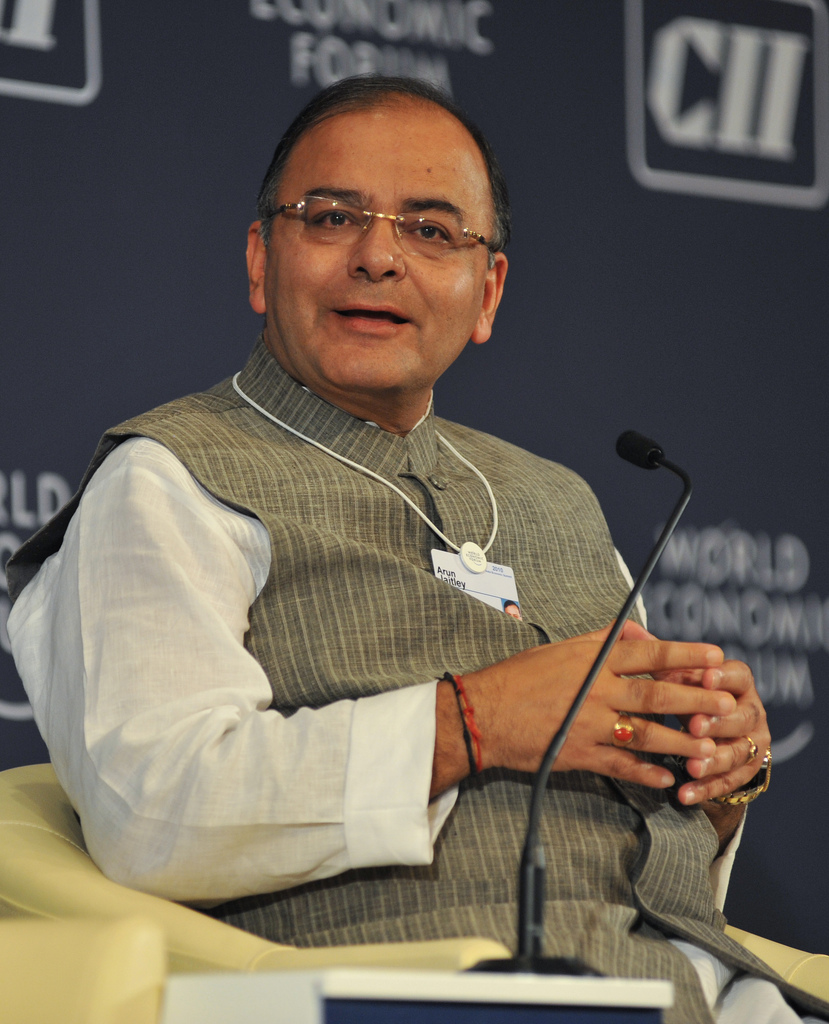Sometimes I think that the finance minister Arun Jaitley has this constant need to talk and in the process he ends up saying stuff which looks rather silly.
Like he said yesterday in Hong Kong: “RBI historically has been a very responsible institution. Now, as somebody who wants India’s economy to grow and who wants domestic demand to grow, I will want the rates to come down…Real estate, for example, can give a big push to India’s growth and this is a sector which is impacted by high policy rates. Therefore, if the policy rates come down over the next year or so, certainly this is one sector which has a huge potential to grow.”
In fact, this is something that Jaitley has said in the past as well. As he said in December 2014: “now time has come with moderate inflation to bring down the rates. If you bring down the rates, people will start borrowing from banks to pay for their flats and houses. The EMIs will go down.”
There is nothing wrong in Jaitley wanting interest rates to come down. Politicians all over the world like lower interest rates because they believe that lower interest rates lead to more borrowing which translates into economic growth. Hence, one really can’t hold that against Jaitley. He was only saying what others of his tribe firmly believe in.
But believing that lower interest rates will lead to the revival of the real estate sector is rather simplistic. The logic here is that since interest rates are high, the EMIs on home loans are high as well. And at higher EMIs people are postponing the home purchase decision.
If interest rates are cut, EMIs on home loans will come down, people will buy homes and this will lead to the revival of the real estate sector. QED.
But as I said earlier in the piece, this reasoning is rather simplistic. Allow me to explain. Every month the Reserve Bank of India puts out sectoral deployment of credit data. This data gives a breakdown of the various sectors banks have loaned money to, including home loans.
Between July 25, 2014, and July 24, 2015, the total amount of home loans given by banks grew by 17.8%. In comparison, the home loans between July 26, 2013 and July 25, 2014, had grown at 17.4%. So, home loans given by banks continue to grow at a very fast pace.
The overall lending by banks between July 2014 and July 2015 grew by 8.2%. Between July 2013 and 2014, the overall lending by banks had grown by 12.6%.
Hence, during the last one year, the growth of overall lending by banks has fallen. Nevertheless, the total amount of home loans given by banks has gone up at a much faster pace of 17.8%, in comparison to 17.4% earlier.
Hence, despite the high interest rates, home loans continue to grow at a fantastic pace. Also, in the last one year, home loans formed around 21.6% of the overall lending carried out by banks. Between July 2013 and July 2014, the number was at 13.2%.
What this clearly tells us is that home loan lending has not slowed down because of high interest rates. It continues to grow at a fast pace. Hence, Jaitley’s logic goes out of the window completely. But how do you explain the fact that the real estate developers are sitting with so many unsold homes?
In a recent research report PropEquity estimated that the “housing sales in the 19 tier II cities fell by 17 per cent as against a 32 per cent decline in the top 14 Tier I cities in the last two years.” Why are home sales falling despite home loans going up?
One of the possible answers is that the number of home loans being given by banks has come down over the years, as property prices have risen at a very rapid rate. This cannot be said with surety given that RBI does not share this data.
The basic problem with Indian real estate is high prices. And unless prices fall, there is no way sales are going to pick up, lower interest rates or not.
It is worth mentioning here that a fall in interest rates does not have a significant impact on EMIs. A home loan of Rs 50 lakh, at an interest rate of 10% and a tenure of 20 years, leads to an EMI of Rs 48,251. At 9.75%, it leads to an EMI of Rs 47,426, which is around Rs 800 lower. The point being that no one is going to buy a home because the EMI is Rs 800 lower.
Also, in order to get a home loan of Rs 50 lakh, the individual interesting in buying a home would need to arrange Rs 12.5 lakh for a down-payment (assuming an optimistic ratio of 80:20). Further, over and above this, some portion of the price will have to be paid in black as well. The question is even in Tier I cities how many people are in a position to spend this kind of money? Not many.
Jaitley needs to realise this. If the real estate sector has to pick up, the government has to go after real estate prices. And Jaitley given that he is so used to saying things, must also start talking about high real estate prices, instead of just high interest rates. That would be a nice change from the usual and will possibly have more impact as well.
(Vivek Kaul is the author of the Easy Money trilogy. He tweets @kaul_vivek)
The column originally appeared on Firstpost on September 21, 2015
